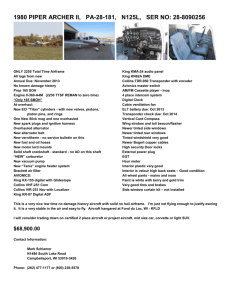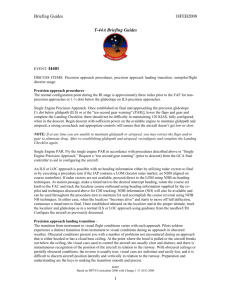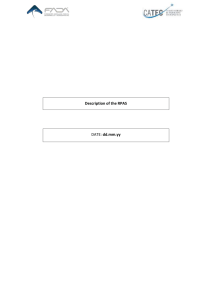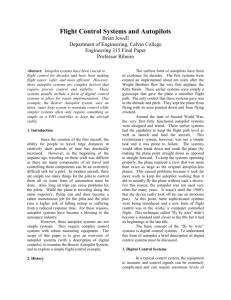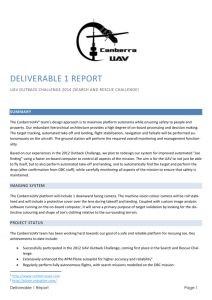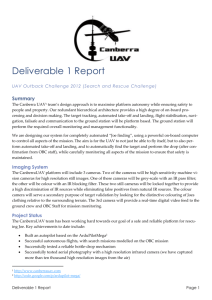Maintenance Manual
advertisement
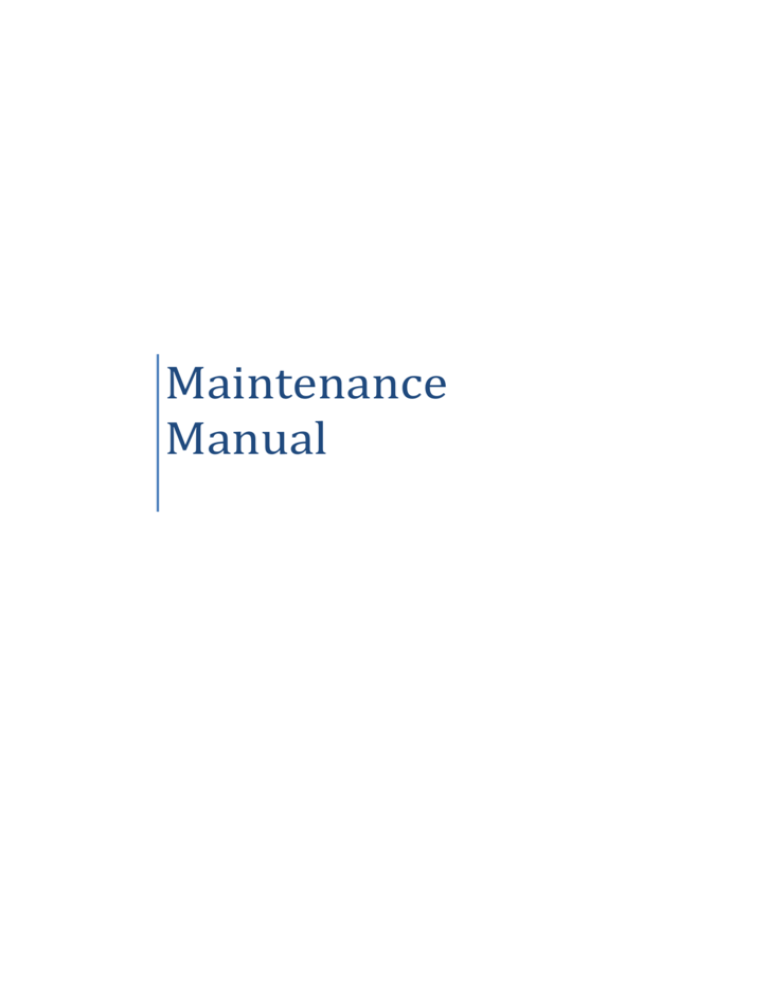
Maintenance Manual PAGE INTENTIONALLY LEFT BLANK INDEX INDEX 3 1 AIRCRAFTS 5 1.1 AIRCRAFTS 1.2 OPERATOR 5 5 2 MAINTENANCE TASKS 6 2.1 2.2 2.3 2.4 2.5 2.6 2.7 2.8 2.9 6 6 6 6 6 6 6 7 7 MAINTENANCE OF THE PROPELLERS MAINTENANCE OF MOTORS BALANCING PROPELLERS AND MOTORS MAINTENANCE OF BATTERIES WEIGHTING AND TRIMMING THE AIRCRAFT MAINTENANCE OF AIRFRAME ELEMENTS MAINTENANCE OF THE AUTOPILOT MAINTENANCE OF THE RC RADIO OTHER MAINTENANCE TASKS 3 REGULAR INSPECTIONS 8 3.1 DAILY BEFORE THE FIRST FLIGHT 3.2 SERVICE INSPECTION 3.3 GENERAL INSPECTION 8 9 9 dd/mm/yyyy PAGE INTENTIONALLY LEFT BLANK dd/mm/yyyy 1 AIRCRAFTS 1.1 Aircrafts Serial number Aircraft Manufacturer Hexacopter Aicraft type Date of Manufacture DJI WooKong M Autopilot model 1.2 Operator Name University of Contact Person Address Phone Number e-mail dd/mm/yyyy 2 MAINTENANCE TASKS Describe the maintenance operations you normally perform on your aircraft. Some examples are shown below. Meter párrafo sobre que se tiene que contolar el numerod e horas y cualquier incidente o accidente. 2.1 Maintenance of the propellers Periodic checks of the propellers must be performed. If any impact or damage is detected, the propeller must be replaced. Before installing the propellers they must be properly balanced using a magnetic balancer. When installing them, be sure that they are properly tightened. 2.2 Maintenance of motors 2.3 Balancing propellers and motors 2.4 Maintenance of batteries 2.5 Weighting and trimming the aircraft The entire aircraft load will be preferably located under its center of gravity. In the case of placing the load in a different place, the resultant center of gravity will have to remain within the limits set by the flight envelope of the aircraft. To do this point the aircraft will be suspended and balanced locating additional weights where necessary. The aircraft must be weighted in order to be sure that it weight is not bigger than the MTOW specified by the manufacturer. 2.6 Maintenance of airframe elements Periodic checks of the aircraft airframe must be performed. If any fissure, crack or delimination is detected on the composite material of the airframe or any damage is detected in the metallic parts of the aircraft, the part must be replaced. 2.7 Maintenance of the autopilot If the autopilot has to be changed, previous autopilot configuration should be saved when possible before replacing it. The new autopilot should be located in the same position and orientation of the previous autopilot and use the same configuration. dd/mm/yyyy 2.8 Maintenance of the RC radio If the RC radio has to be changed, previous RC radio configuration should be saved when possible before replacing it. The new RC radio should use the same configuration as the previous one. Before flying, lab tests will be performed in order to be sure that settings are correct. 2.9 Other maintenance tasks Dust, grass, sand… that may deteriorate RPAS elements (such as servos, threads…) must be removed after operation. Threads and moving parts must be periodically checked to be sure that they can move as expected. Lubricant must be periodically applied to threads and combustion motor moving parts. dd/mm/yyyy 3 REGULAR INSPECTIONS Describe the inspections that you regularly perform on your RPAS system as indicated by the manufacturer. Some guidelines are provided bellow. Maybe, not all of them apply to your system. All checks prescribed are visual inspections for damage, unless otherwise indicated. The work indicated, should be performed within the specified period. All maintenance work should be reflected in the maintenance log, leaving a record of the work done on the aircraft, checks, discrepancies or solutions, being signed by maintenance personnel who performed the task. In addition to these inspection tasks, preflight checks will have to be performed before each flight following the instructions described in the operations manual. 3.1 DAILY BEFORE THE FIRST FLIGHT Before the first flight of the day a complete overhaul of the platform, where a general operation of the system and structural verification will be performed. Check that motors are properly fastened. Check that bearings are free of abrasive elements and without excessive lubricant. Check that propellers are properly fastened and balanced. Look for symptoms of fatigue or cracks in the propellers. Check that electronic elements (including autopilot) and wirings are properly fastened. Check that the landing gear is properly fastened. Check that payload elements are properly fastened. Check that wiring and connectors are installed correctly and undamaged. Check the state of the battery. Functional testing on the ground: o Switching between flight modes. o Check that the aircraft communication and navigation systems work properly. o Check that the aircraft emergency systems work properly. o Check that telemetry is correctly received. After each flight, a quick inspection looking for structural damages will be done. In addition the following tasks will be performed: Measuring the temperature of the motors. Removing waste (grass, sand…). Check that the screws are tightly screwed. dd/mm/yyyy 3.2 SERVICE INSPECTION It has to be performed at least every 6 months or 10 hours of flight as recommended by the manufacturer. . . 3.3 GENERAL INSPECTION It has to be performed at least every 12 months or 25 hours of flight as recommended by the manufacturer. . . dd/mm/yyyy





